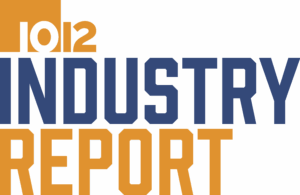
We hear some variation of this statement quite a bit: “We already do human performance; we have a behavior-based safety program.” It’s a common misconception.
 The confusion is understandable as they share some similarities but there are significant differences.
The confusion is understandable as they share some similarities but there are significant differences.
It’s like saying the Harlem Globetrotters and Washington Generals both play basketball. Before tip-off, it appears they will be playing the same game, but when you see them in action, clearly one is performing at a higher level. (Spoiler alert: Human performance is the Harlem Globetrotters—markedly better and with more swagger.)
It’s easy to see where there would be confusion. Simply put, behavior-based safety looks very similar to one small part of human performance: worker behaviors. It also doesn’t help that the term “human performance” just sounds like a process that is only focused on, well, worker behaviors. Additionally, both processes rely on peer engagement and recognize the importance of positive reinforcement. While it’s important to address all these issues, it may not address all the factors.
Here are a few of the gaps in a generic behavior-based safety program:
- It’s a stand-alone program that does not integrate into other programs or processes.
- Originally pitched as a voluntary program, it quickly becomes “volun-told” if engagement is low.
- It relies on peer-to-peer coaching, but typically your peer isn’t any more qualified than you.
- It relies on observation cards, which become little more than “check the box” exercises.
- It is resource intensive, as every worker is asked to audit work and coach their peers.
- It is a bottom up approach that puts the onus on the workers.
I saved the best for last: BBS does not address organizational issues that contribute to worker errors. Human performance addresses errors in two, broad ways: Active Worker Errors and Latent Organizational Weaknesses (LOW). Depending on the study, LOWs are a contributing factor in 72% to 90% of all accidents and errors. Not addressing LOWs is missing huge improvement opportunities and does nothing to strengthen the work processes and environment.
To be fair, when executed incorrectly human performance can also devolve into a singular focus on worker errors. It’s easy to blame the worker, especially when you’re a supervisor. Which brings up another weakness of BBS: It’s asking one worker to stand in judgement of another. How critical are you going to be of your buddy? You know she’s going to get her shot at payback tomorrow. You know his locker is right next to yours. You would like to still eat lunch together. Your life is easier if you just give some positive reinforcement and MAYBE add a low-level, inoffensive coaching item that no one will get up in arms about. Doesn’t really add any value to the organization, does it?
While the BBS “Washington Generals” is good, human performance is more “Harlem Globetrotters” complete. Did you know that in over 14,000 games against the Globetrotters, the Generals have won a total of six times? I suspect there may be some unaddressed organizational factors that are inhibiting performance.
Toolbox Talks offers quick insights and thoughts to use for your toolbox (tailboard) talks. Dave Sowers is a founding member of Knowledge Vine, a veteran-owned human performance training and consulting organization that strives to reduce the frequency and severity of human errors in the workplace. He has almost 30 years of experience in power generation and the utility industry. He is a veteran of U.S. Navy Nuclear Power Program and holds a bachelor’s degree in resources management and a master’s degree in both management and emergency management and homeland security.


